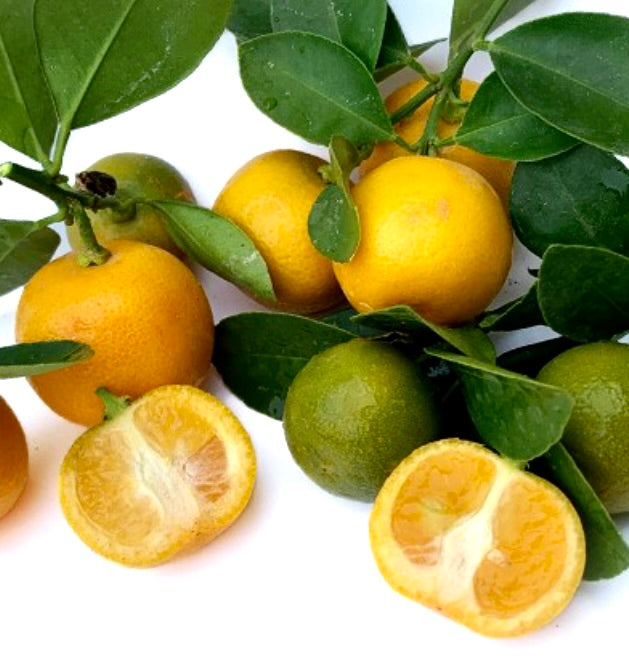Secure Payments
Your security comes first. All our payment methods follow PCI standards and support 3D Secure authentication for safe checkout.

Couldn't load pickup availability
Plant Description
Citrus mitis CALAMONDINO, commonly known as the dwarf mandarin, is a charming small Citrus species prized for its compact size and ornamental appeal. This plant reaches a modest height of 40-70cm, making it perfect for indoor spaces or limited garden areas. Gardeners appreciate its lush, glossy green leaves and its ability to produce fragrant blossoms that attract pollinators. The Citrus mitis CALAMONDINO adds a touch of elegance wherever it is displayed.
The dwarf mandarin is often referred to as the Calamondin orange or Calamondino mandarin, names that reflect its hybrid origin and small fruit size. This mandarin hybrid combines the best traits of mandarins and kumquats, producing bright orange fruits that enhance its ornamental value. Its unique fruit and foliage contrast beautifully, creating a vibrant focal point in any plant collection.
The Citrus mitis CALAMONDINO stands out as a versatile ornamental mandarin. It combines vivid colors and refreshing scents, perfect for plant enthusiasts who want a striking yet manageable Citrus plant. Its rich heritage as a mandarin hybrid enhances its botanical interest, making it a valued addition to any collection focused on unique small Citrus species.
IMPORTANT: The pictures show the mother plant, which is not for sale. The offer includes a plant with the dimensions stated in the description.
Botanical family: Rutaceae
Botanical genus: Citrus
Botanical species: Citrus mitis CALAMONDINO
SKU:BA-2934-S
Plant Height: 30-60cm
Plant Diameter:
Pot Size:
Grafted/Not Grafted:
Disclaimer: Be aware that most plants change across seasons. If present foliage, could have been fallen or change in its color.

Your security comes first. All our payment methods follow PCI standards and support 3D Secure authentication for safe checkout.
Our customer support is available Monday to Saturday from 9:00 AM to 6:00 PM (European time).
Our products travel in professional, eco-friendly packaging made from recycled materials, ensuring safe delivery.
We ship worldwide with full tracking. A Phytosanitary Certificate is provided for all exports outside the EU.
